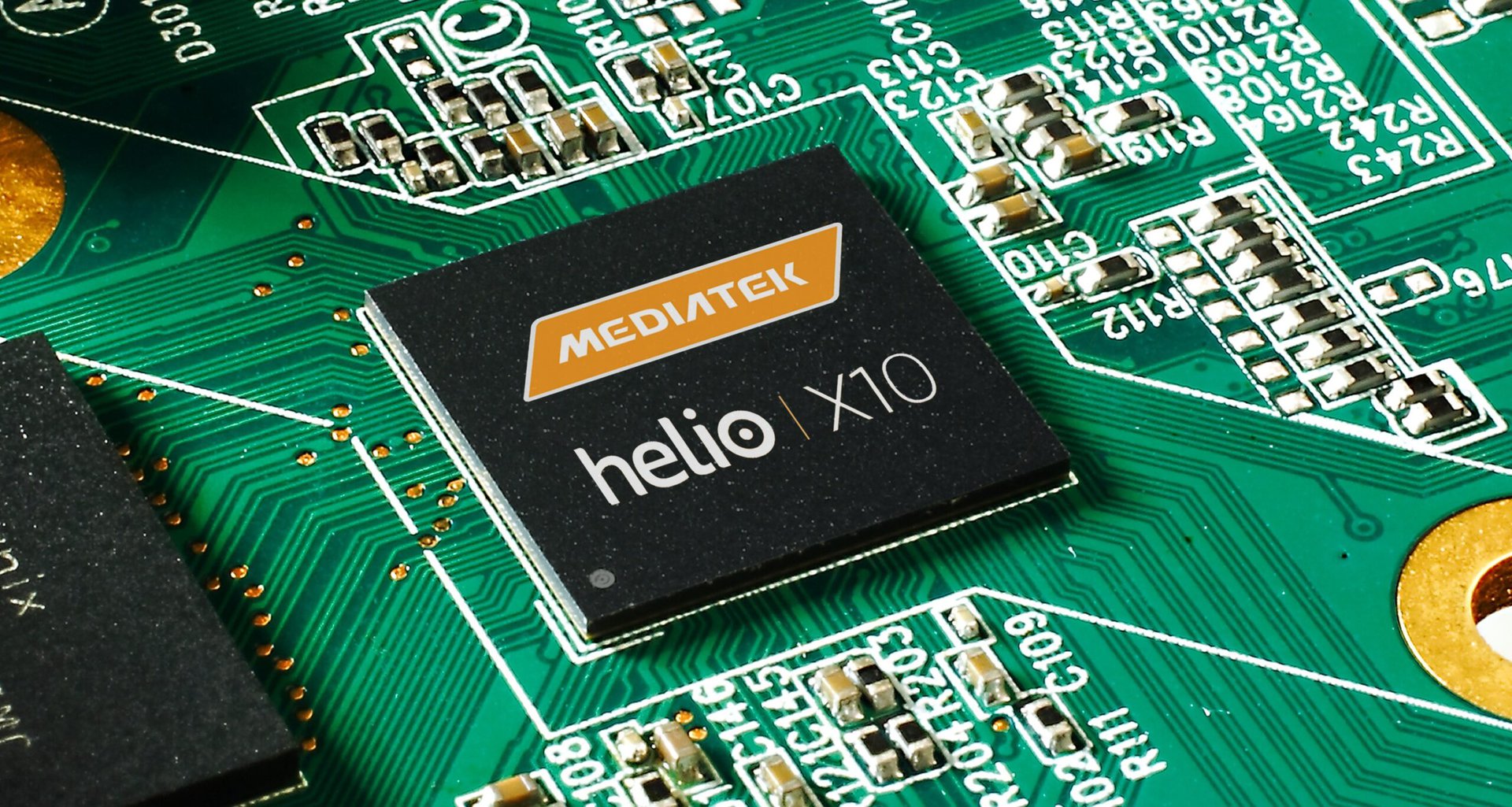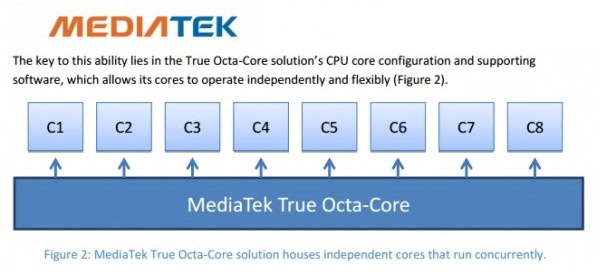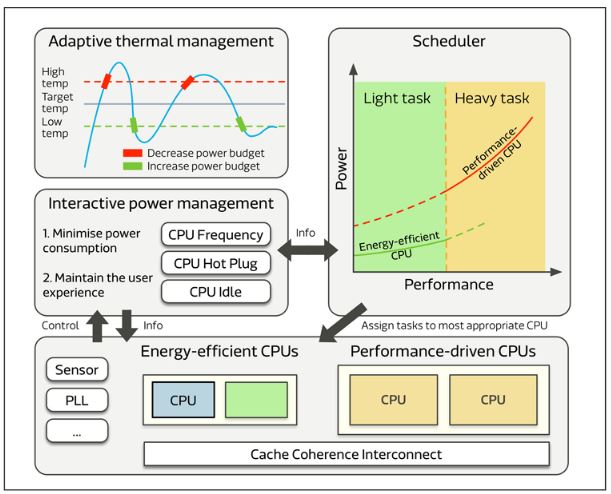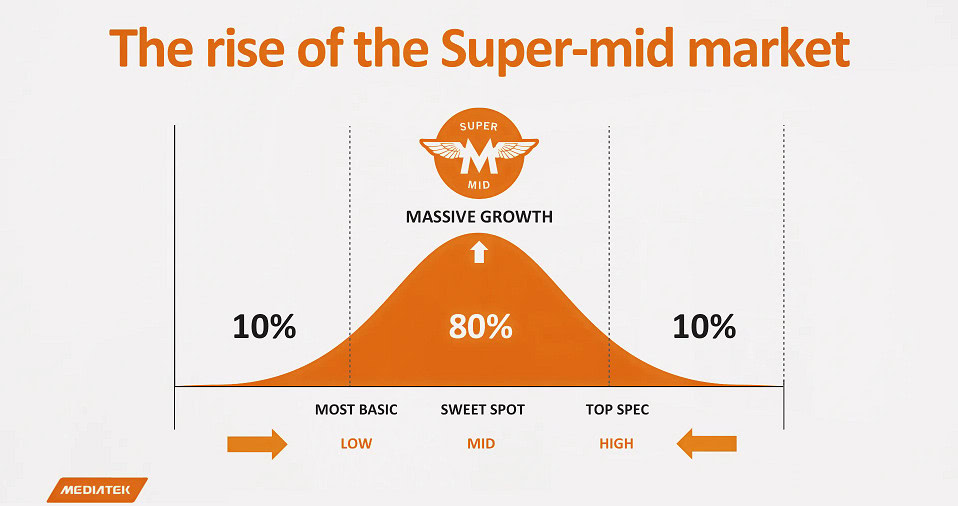Affiliate links on Android Authority may earn us a commission. Learn more.
Getting to know MediaTek and its SoC portfolio
May 19, 2015

MediaTek, a fabless semiconductor company based in Taiwan, is still seen as an outsider in the mobile SoC market by many, but the company has been heavily involved in mobile chip development in the past decade. As well as designing chips for mobile, MediaTek is a founding member of the Heterogeneous System Architecture Foundation and contributor to the Linaro group, which supports open-source software for the ARM architecture, among others.
The company has been developing mobile SoCs since 2009, but has risen to prominence over the past couple of years, thanks to its lower cost products and headline grabbing use of multi-core CPU design. Whether a marketing gimmick or revolutionary breakthrough, MediaTek is now powering a substantial percentage of the world’s smartphones, so let’s take a look at what the company is up to.
ARM flexing
Much like Samsung’s Exynos series, HUAWEI’s HiSilicon SoCs, and even Qualcomm’s latest 64-bit Snapdragons, MediaTek makes heavy use of ARM’s reference designs, rather than developing its own in-house CPU or GPU designs such as Qualcomm’s Krait cores or Adreno GPU. In its most recent product announcements you’ll see the same ARM Cortex-A53, A57, Mali, and Imagination Technologies’ PowerVR GPU components as many other mobile products, and the company has also been the first to market with ARM’s latest Cortex-A72 CPU core design.
MediaTek makes use of the same ARM CPU core designs as current Qualcomm and Samsung SoCs.
As is the popular flavour for mobile SoC designs at the moment, MediaTek was one of the first to adopt ARM’s big.LITTLE architecture, dating all the way back to its first heterogeneous MT8135 SoC announced in July 2013.
The technology sees multiple CPU cores arranged in high performance and energy efficient clusters, in order to more efficiently balance peak performance with the limited power constrains of a mobile platform. This technology has come into focus in the past year or so, due to the specific battery and thermal limits imposed on mobile SoC designs.

You may recall that MediaTek was one of the first to market with a “true” octa-core mobile CPU and more recently has unveiled its 10 core, tri-cluster behemoth X20 chip for mobile, which is designed on the evolution of this principle.

The debate about whether such large core counts in a mobile processor is much more than a marketing gimmick still rages, but MediaTek has been a long-time believer in big.LITTLE. Even Qualcomm, which previously rubbished the idea of eight core mobile chip designs, is now using this architecture. Contrary to the popular misunderstanding, multiple CPU core SoCs are not just all about peak performance, but also about flexibility in task allocation and power efficiency.
To tie such seemingly bulky multi-CPU designs together, MediaTek has developed its own CorePilot technology. This is where the company has applied much of its own work to its SoC designs, in order to make efficient use of its multiple CPU core designs and clusters. As I already mentioned, MediaTek was a founding member of the non-profit HSA Foundation back in 2012 and this has had a profound impact on the company’s recent direction.
CorePilot and Heterogeneous Processing
MediaTek’s CorePilot is derived from the heterogeneous multi-processing technology (HMP) from the open-source Linaro group, a member of the HSA Foundation. Which may be familiar to you if you’ve read anything about ARM’s global task scheduling (GTS) for big.LITTLE.
The idea behind HMP is relatively straight forward – automatically allocate the current task to the most suitable processing core. This way the system can optimise performance and energy itself regardless of the SoC configuration, without having to rely on programmers implementing specific features. CorePilot and GTS avoid the single cluster access problems from early big.LITTLE set-ups, which used kernel switching, allowing each core to be accessed individually and across core clusters.
Heterogeneous multi-core processing has been at the core of MediaTek's efforts in the mobile SoC market.
MediaTek’s CorePilot allows for allocation and management of core loads based on a number of factors, and is designed to avoid performance problems associated with the commonplace Completely Fair Scheduler (CFS).
The HMP scheduler looks at normal priority tasks and assigns them to the correct CPU core based on the performance demand, available cluster capacity, and load-balancing for power efficiency. The separate RT scheduler looks after high-priority tasks and takes priority on the high performance cores to complete these.

As well as the task, thermal management is taken into account to prevent the chip from becoming too hot or consuming too much power, which is important in mobile form factors. Dynamic voltage and frequency scaling as well as “hot plug” on/off switching of CPU cores allows for a wide scale of power savings.

This has shown performance improvements in examples such as Face Detection and image processing. CorePilot 2.0 brings MediaTek’s technology one step closer to true heterogeneous computing, and is used in its latest mobile processors. Advances in GPU compute could see more focus on mixed CPU and GPU workloads in the future.
The latest chips
Turning to MediaTek’s current product line-up, the company is still heavily focused on the “super-mid” market, as it calls it. You won’t find many designs aimed at obliterating the highest end Qualcomm or Samsung chips, but MediaTek has plenty of quad-core parts, big.LITTLE arrangements and its popular octa-core SoCs designed for the fastest growing smartphone markets.
The chart below shows a quick comparison between some of MediaTek’s most noteworthy chips, from the widely used true octa-core MT6592, to its benchmark topping MT6595 and the latest line-up of Helio X processors. Despite the high CPU core count, MediaTek doesn’t pack in a large number of high performance CPU parts and hasn’t always opted for the most powerful GPU configuration available either. Instead, cost and energy efficiency appear to take precedent.
| Helio X20 | Helio X10 | MT6595 | MT6592 | |
|---|---|---|---|---|
CPU | Helio X20 2x Cortex-A72 @ 2.5GHz 4x Cortex-A53 @ 2.0GHz 4x Cortex-A53 @ 1.4GHz | Helio X10 4x Cortex-A53 @ 2.0GHz 4x Cortex-A53 @ 1.4GHz | MT6595 4x Cortex-A17 @ 2.1GHz 4x Cortex-A7 @ 1.7GHz | MT6592 8x Cortex-A7 @ 2GHz |
GPU | Helio X20 Mali-T880 MP4 @ 700MHz | Helio X10 PowerVR G6200 @700MHz | MT6595 PowerVR 6200 @ 600MHz | MT6592 Mali-450 MP4 @ 700 MHz |
Memory | Helio X20 2x 32-bit LPDDR3 @ 933MHz | Helio X10 2x 32-bit LPDDR3 @ 933MHz | MT6595 2x 32-bit LPDDR3 @ 933MHz | MT6592 1x 32-bit LPDDR3 @ 633MHz |
Process | Helio X20 20nm | Helio X10 28nm | MT6595 28nm | MT6592 28nm |
Modem | Helio X20 LTE Cat. 6 | Helio X10 LTE Cat. 4 | MT6595 LTE Cat. 4 | MT6592 HSPA+/TD-SCDMA |
ISP | Helio X20 34MP Dual | Helio X10 13MP | MT6595 20MP | MT6592 16MP |
Video | Helio X20 H.264/HEVC/VP9 decode, HEVC w/HDR encode | Helio X10 H.264/HEVC/VP9 decode, HEVC encode | MT6595 H.264/HVEC decode and encode | MT6592 H.264/HVEC decode and encode |
You can now probably see how these designs are all tied into MediaTek’s focus on HMP. MediaTek’s processor line-up has progressed at much the same time as developments in HMP multi-core technology. From its true octa-core processor, which allowed for dynamic core allocation rather than cluster migration found in Samsung’s early Exynos chips, MediaTek now has a firm grasp on the benefits of and the technology to implement a broad range of core cluster options.
For example, its latest octa-core Helio X10 is optimised for energy efficiency by clocking the two quad-core clusters at different speeds and optimizing silicon development for the power in each cluster. An improvement in energy efficiency and cost over the old octa-core designs that used eight identical cores and were therefore slightly more wasteful. You’ll find similar SoC set-ups in Qualcomm’s extended Snapdragon series, such as the 615 and 410.
The 10-core, tri-cluster Helio X20 chip takes the popular big.LITTLE design to a new extreme
The 10-core Helio X20 chip takes the popular big.LITTLE cluster design, such as the MT6595, to a new extreme, with three clusters of cores designed to scale from low power all the way up to a high performance Cortex-A72 dual-core.
The idea here is to optimize each core cluster for more or less demanding tasks and to allocate between all the cores dynamically. The chip is unlikely to run 10 cores at once and certainly not for very long. Instead, CorePilot will manage a selection of the cores at once to find a more optimal balance of raw performance, energy efficiency and thermal output for the current task. Peak performance won’t best current quad-core A57 designs and the extra silicon space might make X20 more costly than previous MediaTek chips, so it will be interesting to watch how the industry reacts to the technology.

It’s also worth noting that MediaTek has been making a substantial effort to improve the extra capabilities of its mobile SoCs, to match those of its high-end competitors. A lack of integrated LTE compatibility had previously put the company behind Qualcomm, but this has been addressed in this year’s chips. Support for higher resolution image sensors and video encode/decode has also seen the gap close, and MediaTek is pushing forward with support for 120Hz displays as well as 480fps slow motion and 4K video recording, which certainly aren’t low end features.
Although the company has only given out details on its high performance Helio X series so far, a more energy efficient P series is also in the works.
As I mentioned a while back, the move over to 64-bit has been a big opportunity for MediaTek and the company now has a SoC portfolio that equals many of the products offered by its rivals, at least on paper. We’ll just have to wait and see if major product developers can be won over by MediaTek’s latest chips.
Branching out
Mobile has become a huge market for MediaTek in the past five years and the company is also looking to secure itself a slice of future trends too. Last year the company announced its first multi-mode wireless charging product which was certified for use with Qi and PMA standards. It is also working on a multi-mode inductive and resonance charging module, which could be put into future product to futureproof them against shifts in the wireless charging market.
The past twelve months has also seen MediaTek launch its first processing package designed for the wearables market (the MT2601) and the announcement of its MediaTek Labs initiative, which is designed to help developers design new wearable and IoT products. The company is keen not to be left behind with the next big trend.
Open-source controversy
From a product point of view, MediaTek looks to be on the right track. However, the company doesn’t have the best reputation among the developer community and many consumers remain skeptical about the company’s hardware due to its refusal to share source-code.
Historically, MediaTek has chosen not to to release the Linux kernel source-code behind any of its products, at least not at a reasonable price, which runs contradictory to the GPL agreements associated with Android.
A lack of source-code prevents third party patches for any security or hardware issues left unfixed by the company
Not only that, but it’s a rather unfriendly stance to take towards developers and consumers. A lack of source-code prevents third party patches for any security or hardware issues left unfixed by the company and locks the products out of running third party operating systems, such as custom ROMs. This leaves consumers at the mercy of slow manufacturer update timetables. It’s not really in the spirit of open-source Android development and MediaTek’s base in China makes any legal challenges difficult to pursue.
MediaTek has been making little efforts to mend its image in this regard, having joined the Linaro group and releasing the full kernel source code for first generation Android One devices last year. However, there are still a huge number of products in the wild that haven’t received the same treatment and no-indication that this will become the norm for upcoming products either. We’ll have to wait and see if the company adopts a more open-source friendly approach moving forward, but the announcement of MediaTek Labs is a step in the right direction.
MediaTek still has a long way to go to ingratiate itself with Western consumers and the development community, and its focus on the “super-mid” overseas markets means that this is unlikely to happen in the immediate future. However, the company is playing it smart, in terms of market share, by catering to the fastest growing mobile segments in China, India and South America. We’ll certainly be seeing a lot more of MediaTek in the next couple of years.
Thank you for being part of our community. Read our Comment Policy before posting.